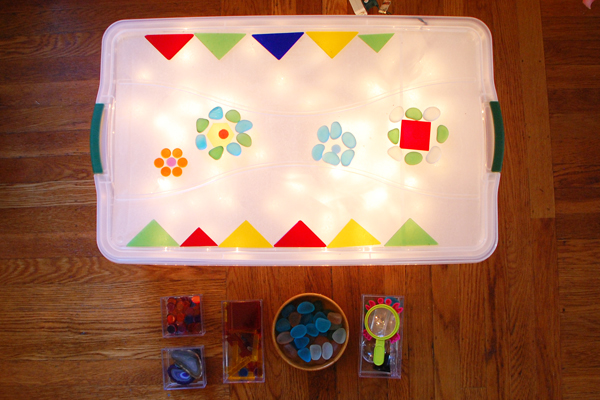

You can use a desk lamp with a clamp and attach it to one of the light box’s pieces of PVC. To get started you can use a desk lamp on either side of the light box. Once you have the outsides covered with a diffusing material you can bring in the lights. I have since replaced the tissue paper with a plastic table cloth from the dollar store. The paper worked great as a diffuser but ripped too easily. When I first built my light box I used a hot glue gun to attach tissue paper all the way around the structure except for the bottom and the front of the box. In order to get the soft, even light associated with light box photography you need to cover your newly built structure with a white, semi-transparent material. You also have the option of leaving the joints loose so that you can take down the light box for storage purposes. If you want to keep your structure assembled at all times, you can solidify each of the joints with a dab or two of hot glue on the inside of the connections. Light Diffuser, Collapsibility, and Sturdiness
#Homemade animation light box how to
Please continue on to the final page of tis DIY photography article to learn the final steps on how to build a light box for photography, information on using the light box, and a breakdown of how much it costs to make your own light box. You now have the basic structure for your light box (Note: The image below of the completed frame has been flipped already)! Images complimenting the steps above Flip your structure around and place it such that the PVC piece with the document clips is on top and farthest away from you. Insert the remaining piece of PVC in the remaining slot. Place this piece, clips facing the floor, on the side which has a piece parallel to it on the ground. Step 5: On the remaining piece of PVC pipe, use a hot glue gun to attach the document clips about 2 inches in from either end. Make sure that the 4 open ends of the “interior/exterior” 90 degree joints are all facing inwards as seen in the “Step 4 image” below. Step 4: Place these two pieces on the structure from earlier by attaching the open ends of the T-joints to the pieces of PVC sticking up in the air. Place 4 “interior/exterior” 90 degree joints on the left and right sides of the T-joints like before, but on both ends you should now have something similar to the “Step 3 image” below. Take two pieces of PVC pipe and put a T-joint on either end. Step 3: Place this structure off to the side for the moment. You should have something that looks like the “Step 2 image” below. Place a piece of PVC pipe in each of these slots. Lie what you have down and you should have 4 open joints pointing upwards. Step 2: Place a piece of PVC connecting the two open ends of the T-joints of those two pieces. Your two pieces should look like the “Step 1 image” below. Next place an “interior/exterior” 90 degree joint on the left side of the T-joint on one and on the right side of the T-joint of the other. While the T-joint is lying flat, on the other end of each piece of PVC place a 90 degree joint so the one end that is still open is pointing straight up. Take two of your pieces of PVC pipe and attach a T-joint to them. Step 1: The first thing that you need to do is to cut down your PVC pipe into 11 equally long pieces (in my case each of the PVC pipe pieces were 20" long). Light source for the box (Flash, desk lamps, and construction lights all work well) PVC pipe cutters (A saw, sharp knife, or strong scissors will also do fine) Materials needed to make and take pictures using the light box: Tissue paper, a thin white table cloth, white plastic sheet, or something else to diffuse the light of your box. The materials presented below are for a light box that is 20"x20"x20", if you want a bigger or smaller light box, you just need to adjust the size/amount of PVC pipe that you get.Ģ regular, plastic 90 degree joints for PVC pipeĦ “interior/exterior”, plastic 90 degree joints for PVC pipeīristle board (different sheets of different colors for backgrounds)

By using a few household objects and some PVC pipe that you can get from your local hardware store, I will show you how to build a light box for photography. The catch is that light boxes in your local camera store can easily cost you upwards of a hundred dollars! In this DIY photography tutorial, I will show you my inexpensive solution that gives you a great way to get the same results. A light box provides photographers with the means to have soft, diffuse light and uniform background. Photographers who specialize in product photography will often use what is known as a light box for their work.


 0 kommentar(er)
0 kommentar(er)
